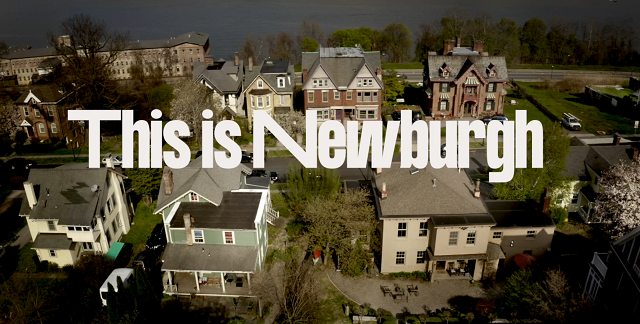Recently, the Newburgh city council voted to pay a Schenectady, N.Y. company $295,000 to demolish three buildings: 159 Grand St. 113 Washington St. and 10 Dubois St. An independent estimate put the total cost of the demolitions by a Newburgh-based company at only $90,000. Located in Newburgh’s Historic District, the beautiful 159 Grand St. has many of its original features intact. Instead of destroying Newburgh’s heritage one building at a time, why not use the money to renovate these structures? A microphone will be set up nearby where they hope that you’ll record your vision of Newburgh’s future.
“Newburgh’s historic district is New York State’s largest and contains a collection of structures which span four centuries of architectural history. In 1782-3 General Washington commanded the army from a farmhouse on the banks of the river and in 1850 it became America’s first historic site. Growing to prominence in the 1820s through river industry, the Empire State’s prominent families built ornate mansions overlooking the waterfront there. In the 1840s, Andrew Jackson Downing created the first architectural collective in the American tradition by pioneering an integrated style landscape design and bringing the world’s most creative minds to the area to build their masterpieces. Newburgh’s institutions and businesses flowered during the gilded age and left a wake preeminent public spaces. America’s first “garden city” was built here in the twentieth century and the walkable downtown areas boasted premier shopping and entertainment venues. Always at the forefront of historic preservation and green-space commemoration, it a tragic reality that Newburgh suffered severely during Urban Renewal. Between 1970 and 1973, 1,300 structures were senselessly demolished leaving 50 acres of waterfront property vacant for decades. Economic crisis and political instability followed and today a group of businessmen and artists have reclaimed the downtown to restore the City’s vibrant traditions despite these troubles. In spite of the lessons learned from Urban Renewal, the city government continues to ignore the city’s greatest assets. We are demanding an end to this short-sightedness — that we want our city to find better solutions, to uphold architectural protections and to market these properties with accountability to the entire fabric of our community”.
To learn more about the preservation mob, visit www.preservationmob.us


![PreservationMOB[1]](https://newburghrestoration.com/wp-content/plugins/lazy-load_disabled/images/1x1.trans.gif)




